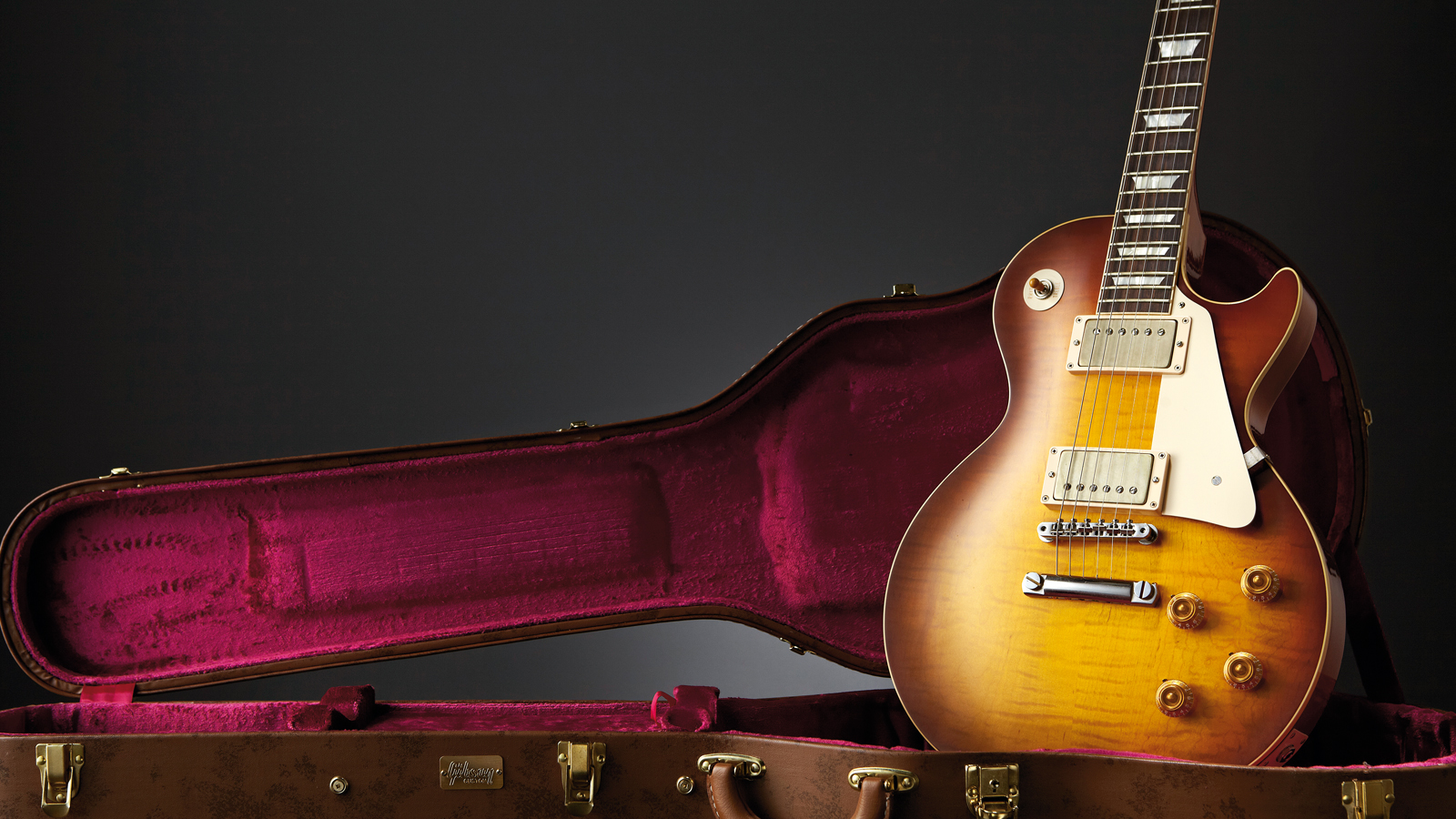
1. Quick list
2. Best on a budget
3. For blues rock
4. Most versatile
5. Most playable
6. Best overall
7. For bright tones
8. Most lightweight
9. Something different
10. For 60s tones
11. Best for shred
12. Buying advice
13. How we choose
You've listened, you've watched, you've admired, but now it's time to give it a go for yourself - I mean, how hard can it be to transform yourself into a rock guitar god, right? Well, for starters you’ll need one of the best rock guitars in this guide.
If you're here, then you've decided to take the plunge and grab yourself an electric guitar that is ready to rock. Luckily we've put together this handy guide to help you navigate through the different types of guitars used in hard rock, as well as examples of the best rock guitars you can buy right now, at a range of price points.
Whether you're longing for a Gibson Les Paul, got your heart set on a Fender Stratocaster, or tempted by a Fender Telecaster, we've narrowed down the choices to help you make the right decision and get you started on the road to rock-stardom.
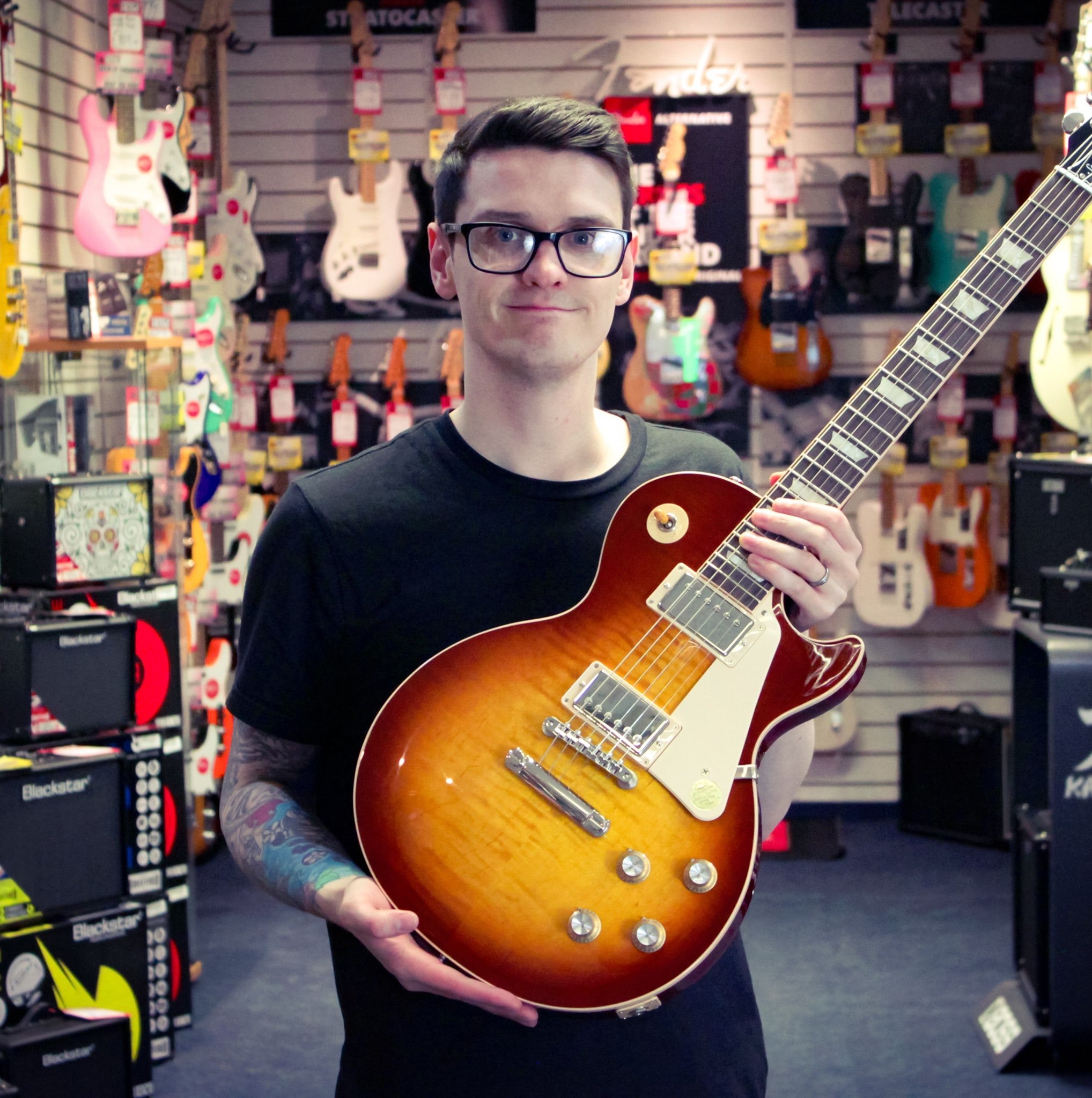
Daryl is a Senior Deals Writer on Louder's sister sites MusicRadar, Guitar World and Guitar Player and is a frequent contributor to Total Guitar and Future Music. He has a passion for anything that makes a sound, in particular guitars. In a previous life, he worked in music retail, giving advice on all aspects of music creation, selling everything from digital pianos to electric guitars and entire PA systems. He's also a fully qualified sound engineer with experience working in various venues in Scotland.
Best rock guitars: Quick list
Want to cut to the chase and find out exactly which we think are the best rock guitars on the market right now? Below, you’ll find a round-up of our top choices. You can jump to a more detailed review of every pick and our handy price comparison tool will also help you find the best deals.
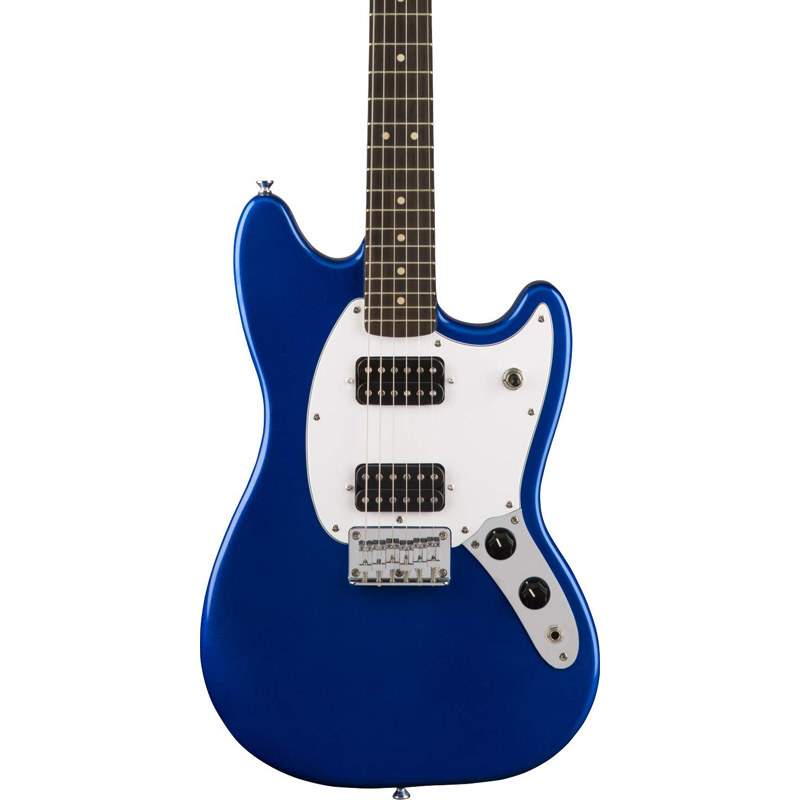
The Squier Bullet Mustang HH follows in the footsteps of the modified guitars of the grunge scene, opting for dual humbucking pickups, and a simplified control layout. The thin C shaped neck and shorter scale length make this a very comfortable guitar to play - especially if you’re just starting out on your guitar journey.
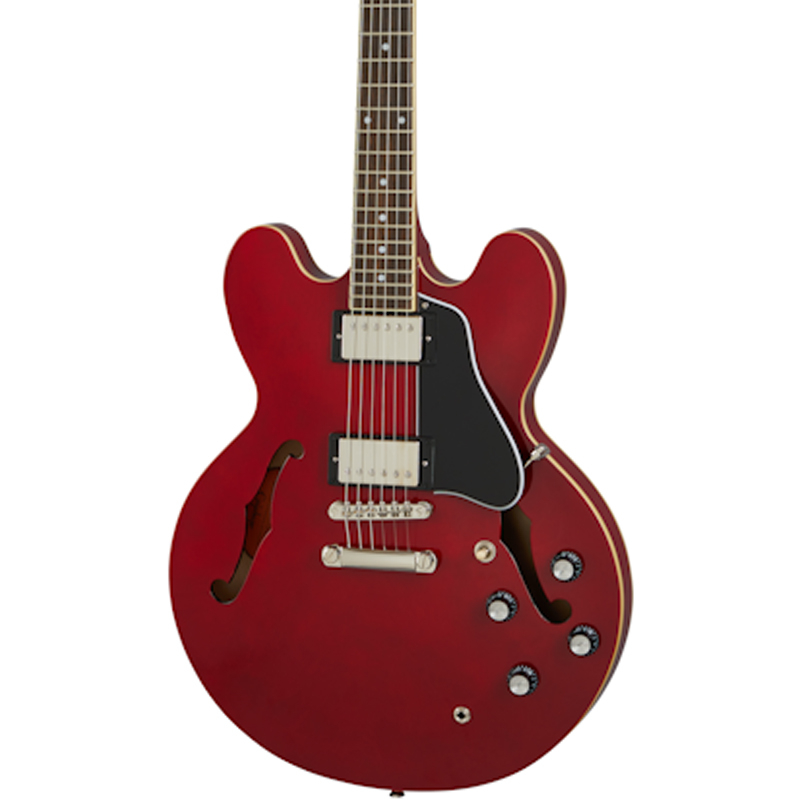
Before solidbody guitars took over in the early 1950s, hollowbody guitars were all the rage, but they had one problem: a tendency to feed back when exposed to loud volume. Gibson sought to solve the problem with the ES-335, a semi-hollowbody that bridged the gap thanks to a solid wood block that runs through the middle of the guitar.
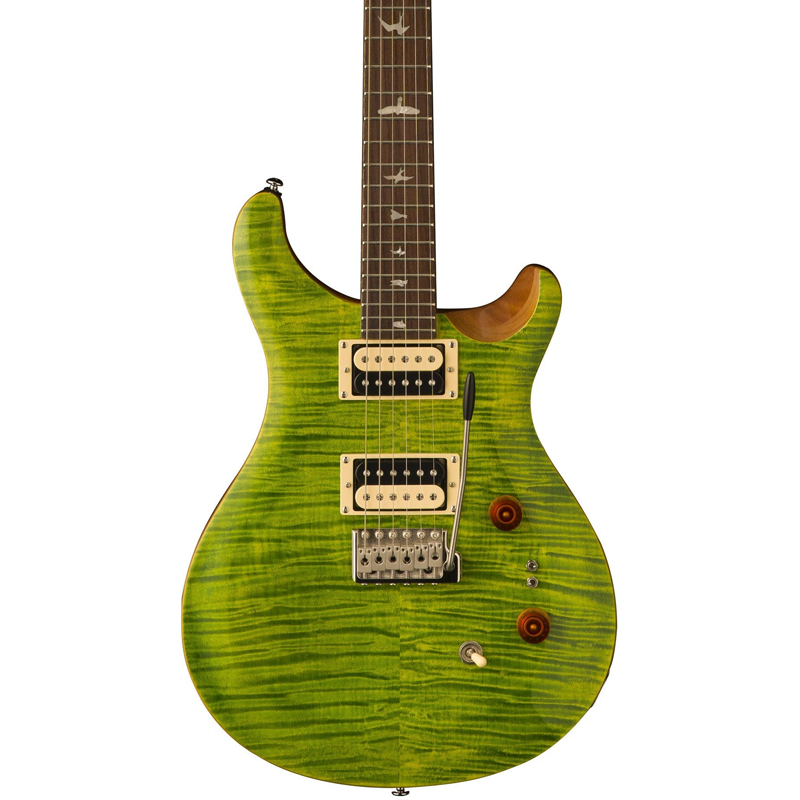
The SE Custom 24 is PRS’s cut-price take on its flagship model, offering 24 frets and a range of beautifully finished maple tops that give Gibson a run for their money. PRS’s other killer app is its own-brand hardware, which is absolutely top-notch, and its range of pickups, which all offer coil-split options for unparalleled versatility.
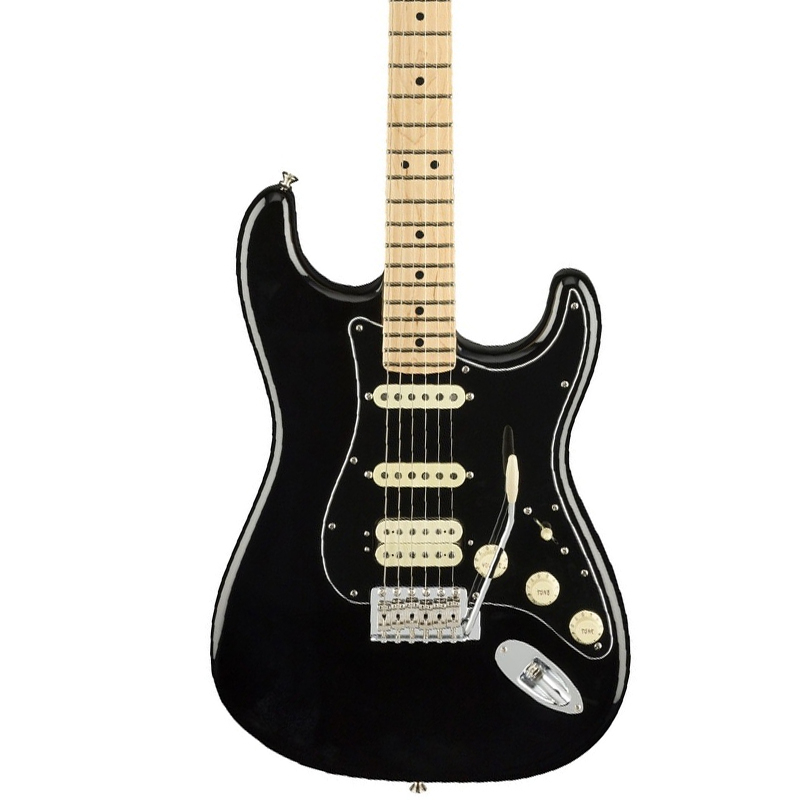
For some guitarists, equipping a Stratocaster with a humbucker bridge pickup amounts to sacrilege, but hear us out: here, it enables you to wring more muscular rock tones out of the typically brash bridge position, plus this American Performer model has a killer coil-split function, where that humbucker is transformed into a single coil, so you get the best of both worlds! A comfortable satin-finished Modern C neck ensures great playability, too.
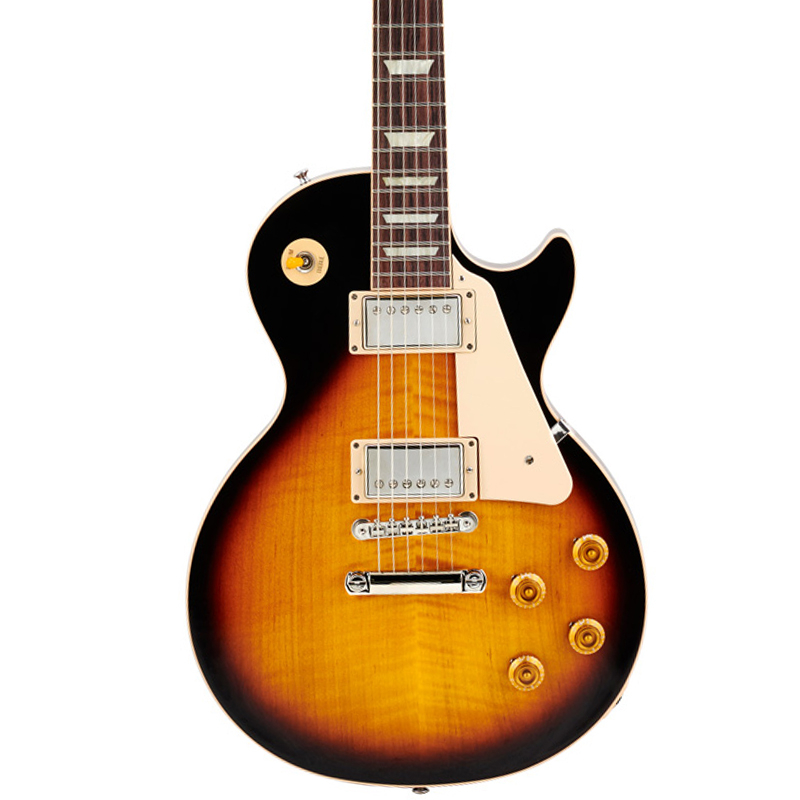
That stunning maple top will be the first thing to catch your eye, of course – particularly in this choice of Gold Top, Heritage Cherry Sunburst and Tobacco Burst - but this LP sounds as good as it looks, courtesy of a set of calibrated Burstbucker humbuckers, which deliver plenty of output for those wailing leads and hard-rocking rhythms. The one sticking point is the price, but if you’re serious about nailing the classic-rock vibe, you need an LP.
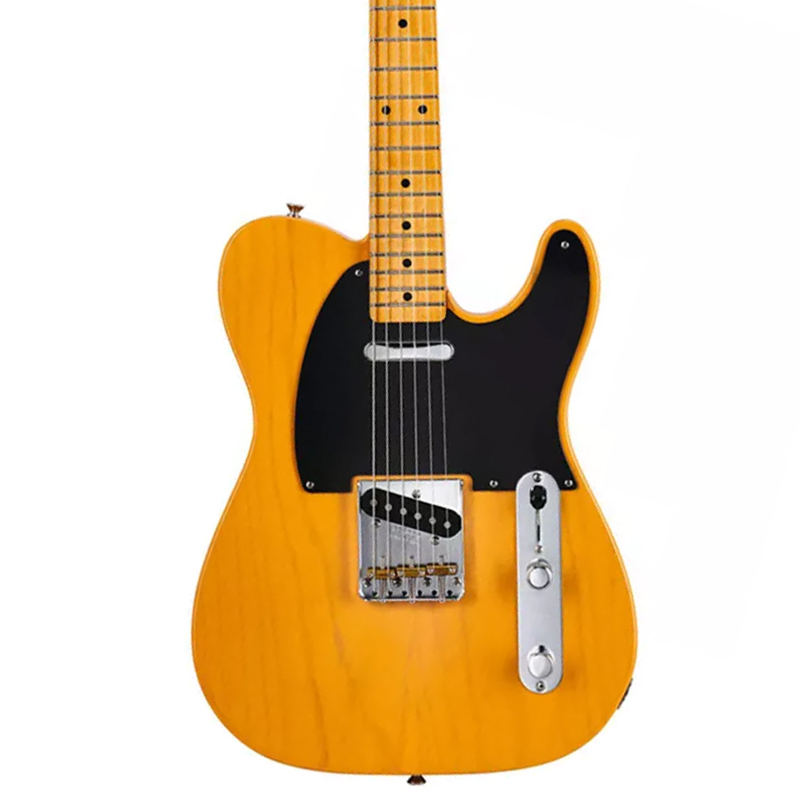
This Vintera model is one of Fender’s latest takes on the Telecaster, and combines the best of vintage and modern specs. While the looks are pure ’50s, the playability is more comfortable thanks to a modern neck shape, while a concealed S-1 Switch allows you to unlock more humbucker-esque and out-of-phase tones, making this just about the most versatile Telecaster on the market.
Load the next 4 products ↓
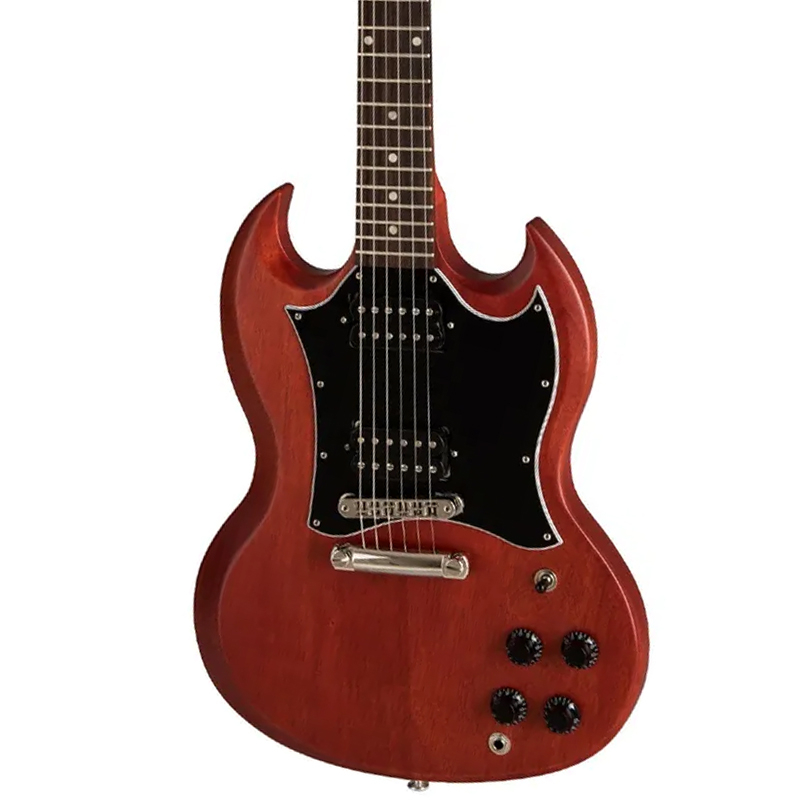
Gibson’s ‘other’ rock guitar was a sequel of sorts to the Les Paul – early runs even bore the guitarist and innovator’s name – but soon fostered an altogether heavier audience. The SG’s big plus points are the easy upper-fret access, relatively lightweight and a slender, easy-to-play neck, which is set into the body for increased sustain. This particular incarnation not only offers great value for money, but great tones, too.
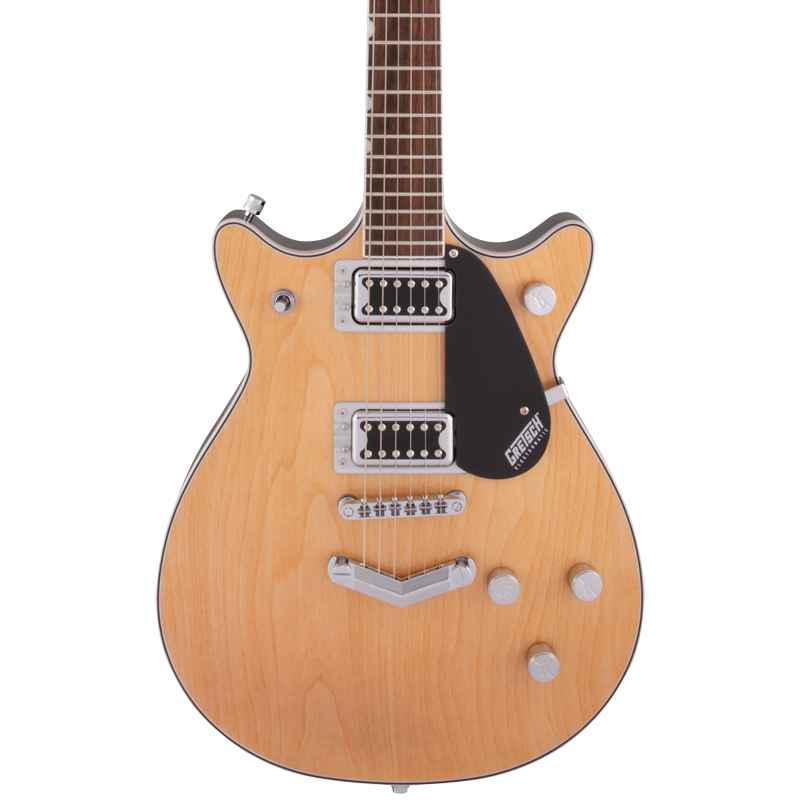
When we think of the Gretsch Jet, we instantly think of the classic tones produced by Malcolm Young. Although this isn't exactly the same model used by the famed rhythm guitarist, it will get you pretty close to that sound and at a fraction of the price. Gretsch is known for its bright and highly articulate sound, and the Gretsch G5222 is no different. The Black Top Broad'Tron pickups certainly impress with how accurately they reproduce the classic Gretsch tones.
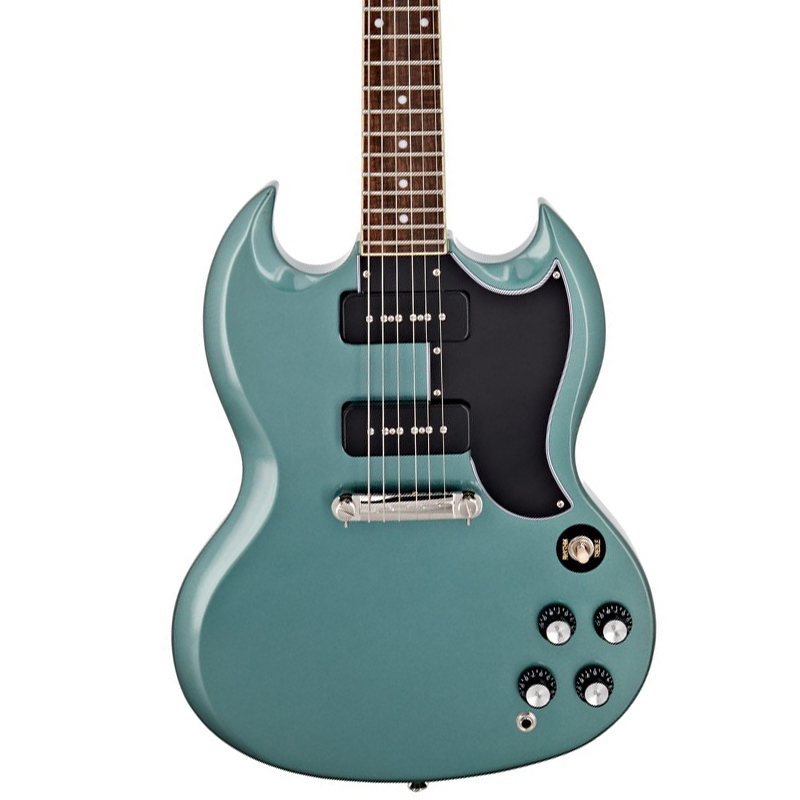
You can't have a list of the best rock guitars and not include a P-90 loaded axe! The P90 is a single-coil pickup originally produced by Gibson as far back as 1946. Unlike its Fender counterpart, the P90 has a more aggressive, fatter tone perfect for rock, so it's no wonder it's a favourite of Billie Joe Armstrong, Carlos Santana and Tony Iommi. The Epiphone SG Special not only delivers on sound but also on playability. The 60s slim taper neck is a dream to play, and the rolled edges add an extra level of comfort.
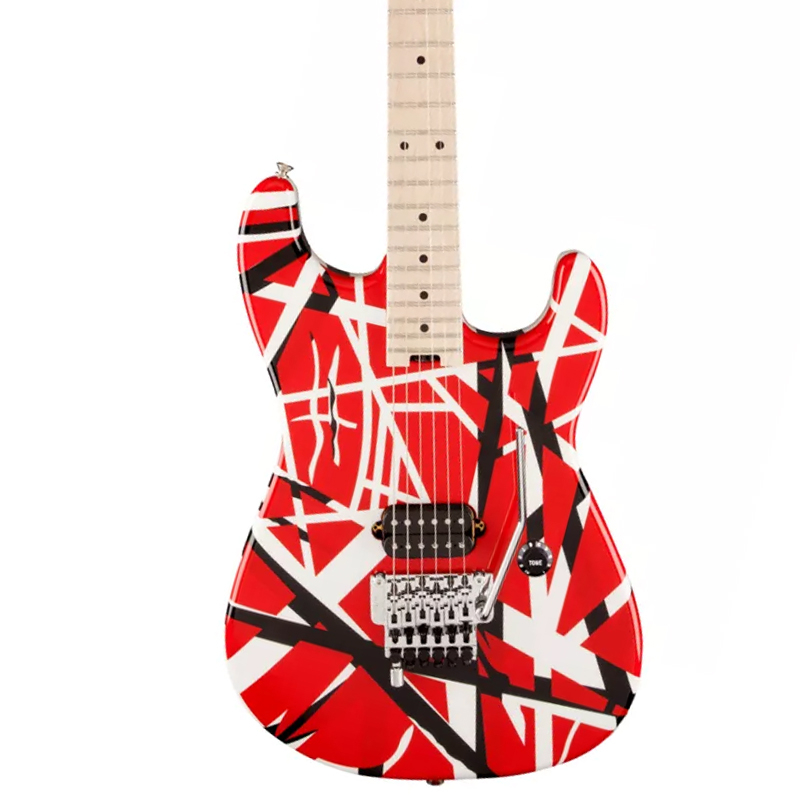
Here, you get a single EVH Wolfgang bridge humbucker, designed to be run into an overdriven amp for the tight rhythms and dizzying lead pyrotechnics with which its namesake made his name. Other features include a hand-rubbed oil finish on the speed-orientated fretboard and a Floyd Rose locking tremolo system, built for divebombs without going out of tune.
The best rock guitars 2023
You can trust Louder Our experienced team has worked for some of the biggest brands in music. From testing headphones to reviewing albums, our experts aim to create reviews you can trust. Find out more about how we review.
Best on a budget
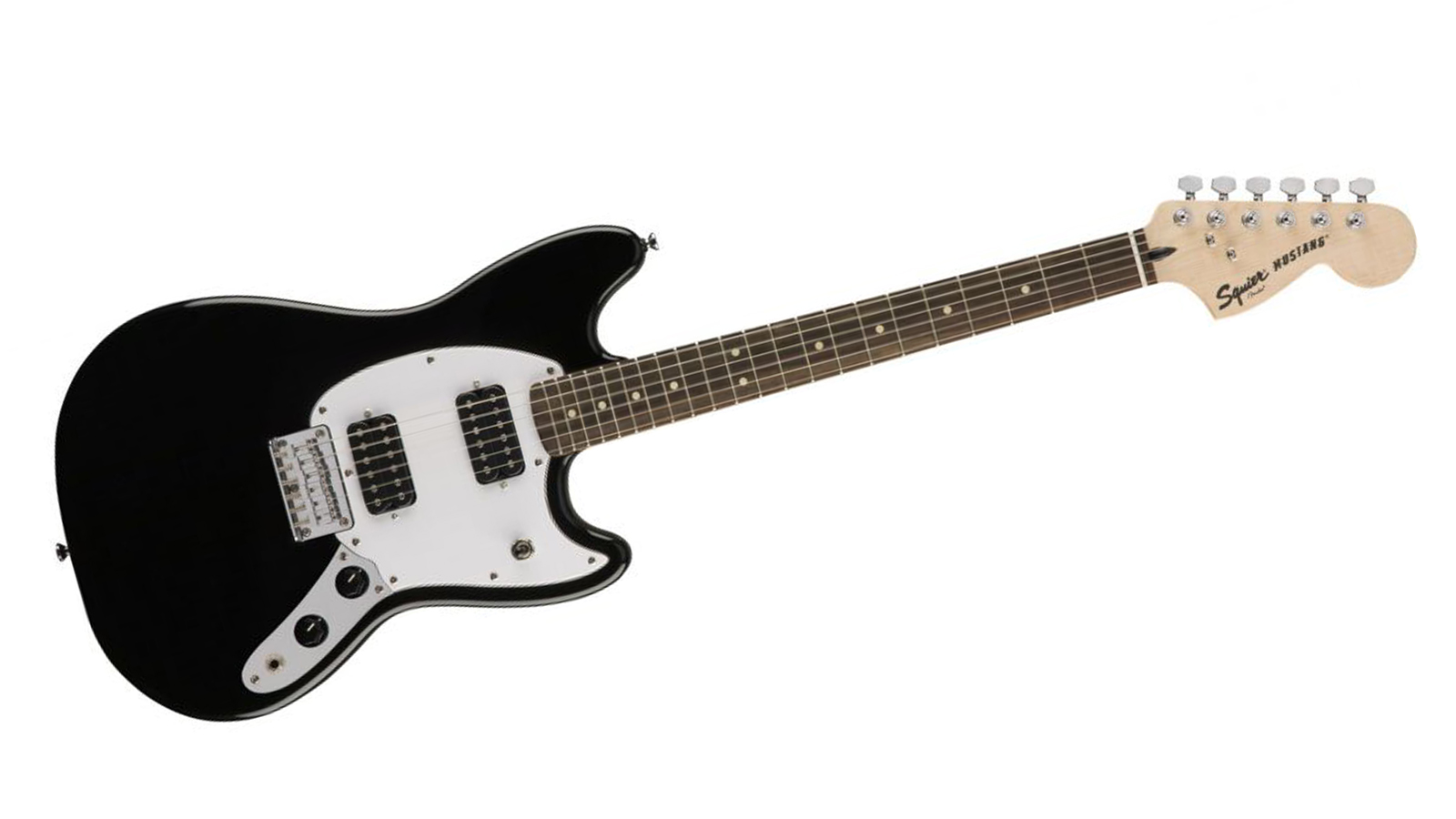
The Mustang has always been an underground icon, with players such as Kurt Cobain, Bilinda Butcher, Thurston Moore and David Byrne embracing the offset guitars unique look and sound. Initially released in 1964, the Mustang was intended to be nothing more than a student guitar, but would go on to help define the sound of the 90s.
The Squier Bullet Mustang HH follows in the footsteps of the modified guitars of the grunge scene, opting for dual humbucking pickups, and a simplified control layout. The thin C shaped neck and shorter scale length make this a very comfortable guitar to play - especially if you’re just starting out on your guitar journey.
So, if you’re looking for a guitar that invokes the feel of the early 90s, but won't break the bank, then definitely consider the Squier Bullet Mustang HH.
Best for blues rock
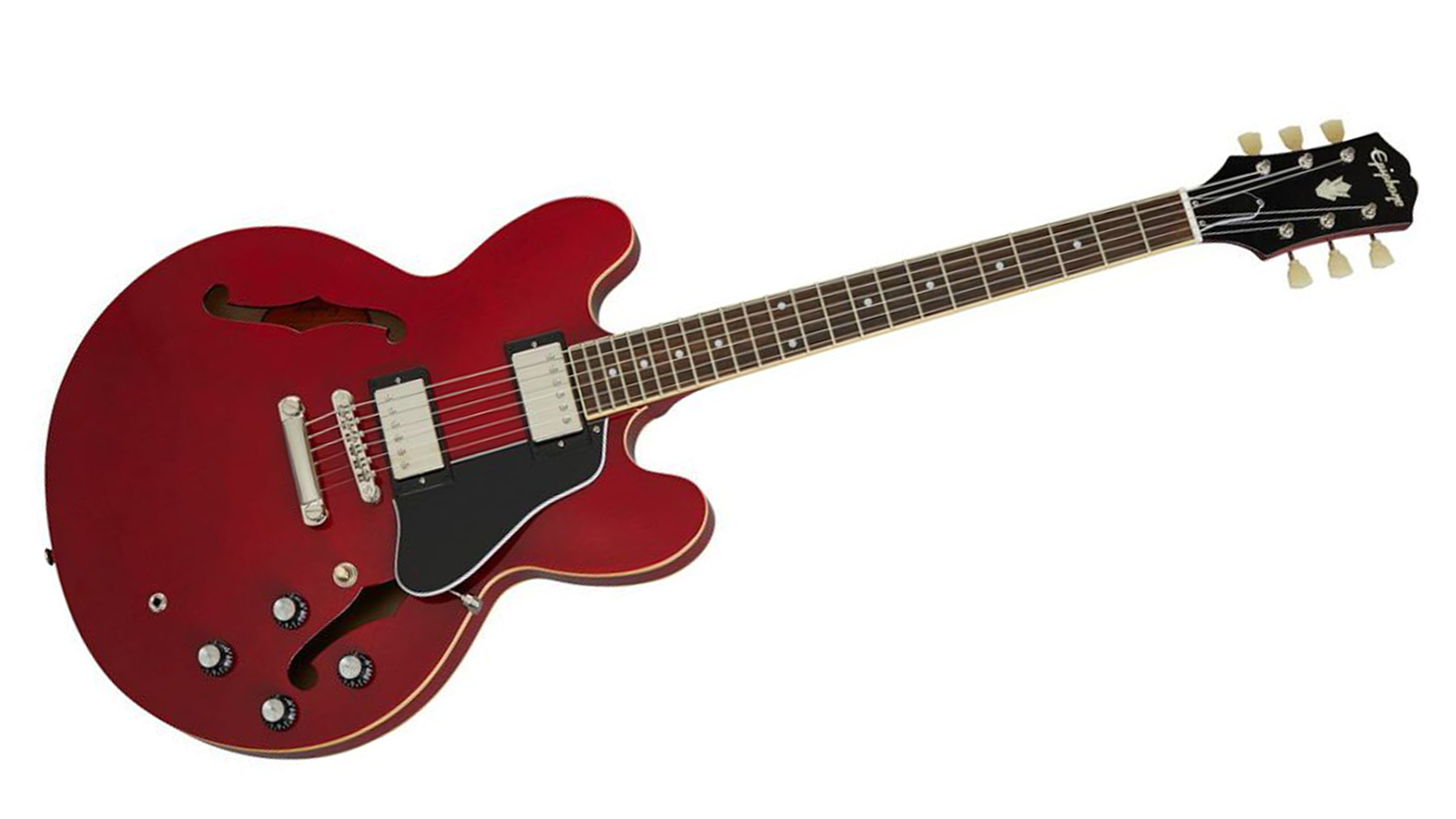
Before solidbody guitars took over in the early 1950s, hollowbody guitars were all the rage, but they had one problem: a tendency to feed back when exposed to loud volume. Gibson sought to solve the problem with the ES-335, a semi-hollowbody that bridged the gap thanks to a solid wood block that runs through the middle of the guitar.
Gibson’s budget brand Epiphone does a great version of the 335, with a maple top and sides, easy-playing SlimTaper neck and Alnico Classic humbuckers for the vintage-voiced sounds that Chuck Berry, Eric Clapton and Noel Gallagher found so appealing.
Best for versatility
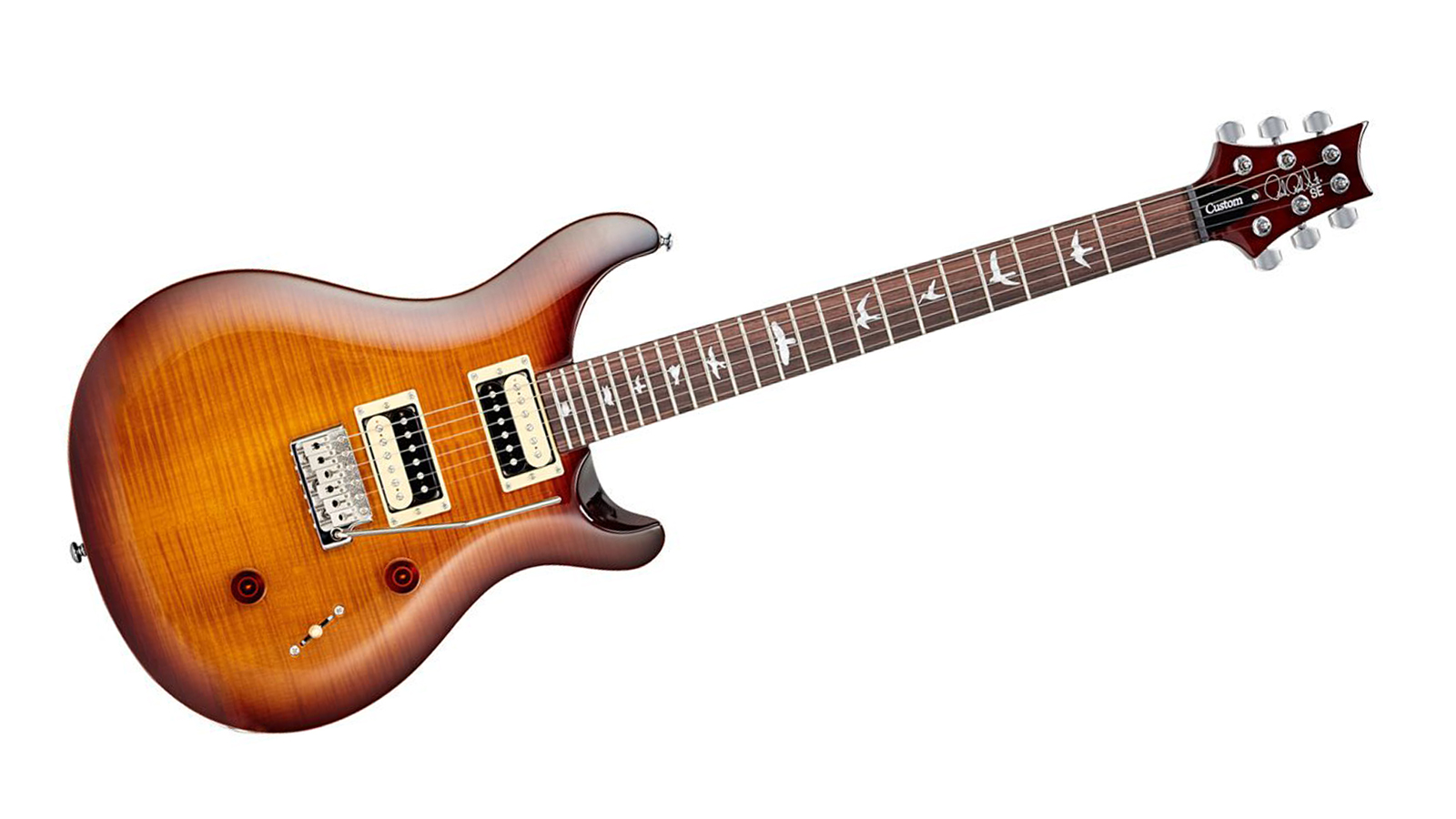
PRS Guitars are seen as the Ferrari or Porsche of guitar design, with high performance – and often an accompanying high price tag – at the top of the agenda. Thankfully, Paul Reed Smith sought to bring that attention to detail to the masses with the SE series, which offers the best possible bang for your buck in this price range.
The SE Custom 24 is PRS’s cut-price take on its flagship model, offering 24 frets and a range of beautifully finished maple tops that give Gibson a run for their money. PRS’s other killer app is its own-brand hardware, which is absolutely top-notch, and its range of pickups, which all offer coil-split options for unparalleled versatility.
Best for playability
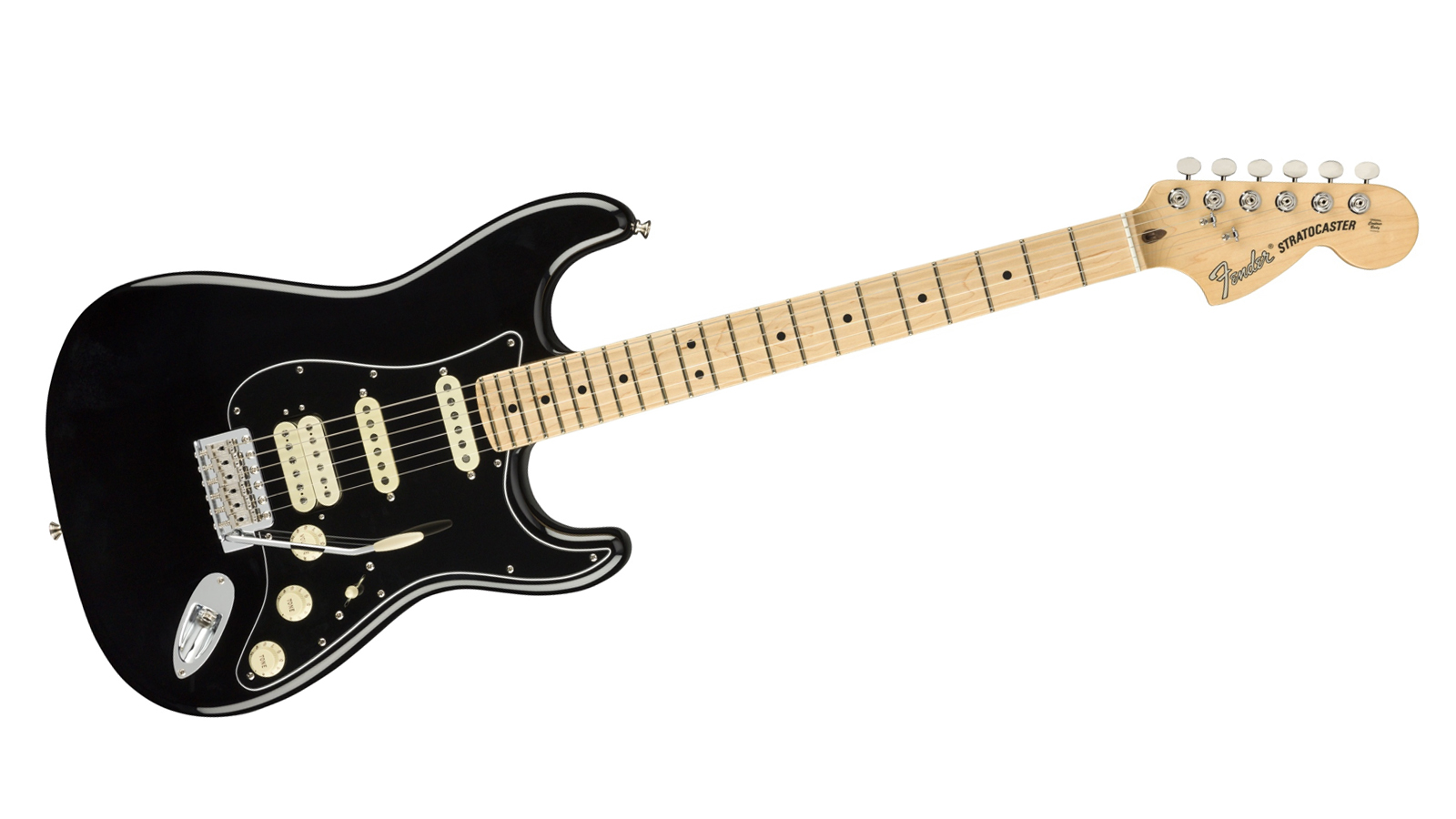
The Stratocaster is one of the all-time great electric guitar designs, beloved of David Gilmour and Ritchie Blackmore, and although Fender hasn’t messed too much with the formula over the years, it has added a number of bonus features.
For some guitarists, equipping a Stratocaster with a humbucker bridge pickup amounts to sacrilege, but hear us out: here, it enables you to wring more muscular rock tones out of the typically brash bridge position, plus this American Performer model has a killer coil-split function, where that humbucker is transformed into a single coil, so you get the best of both worlds! A comfortable satin-finished Modern C neck ensures great playability, too.
Best rock guitar overall
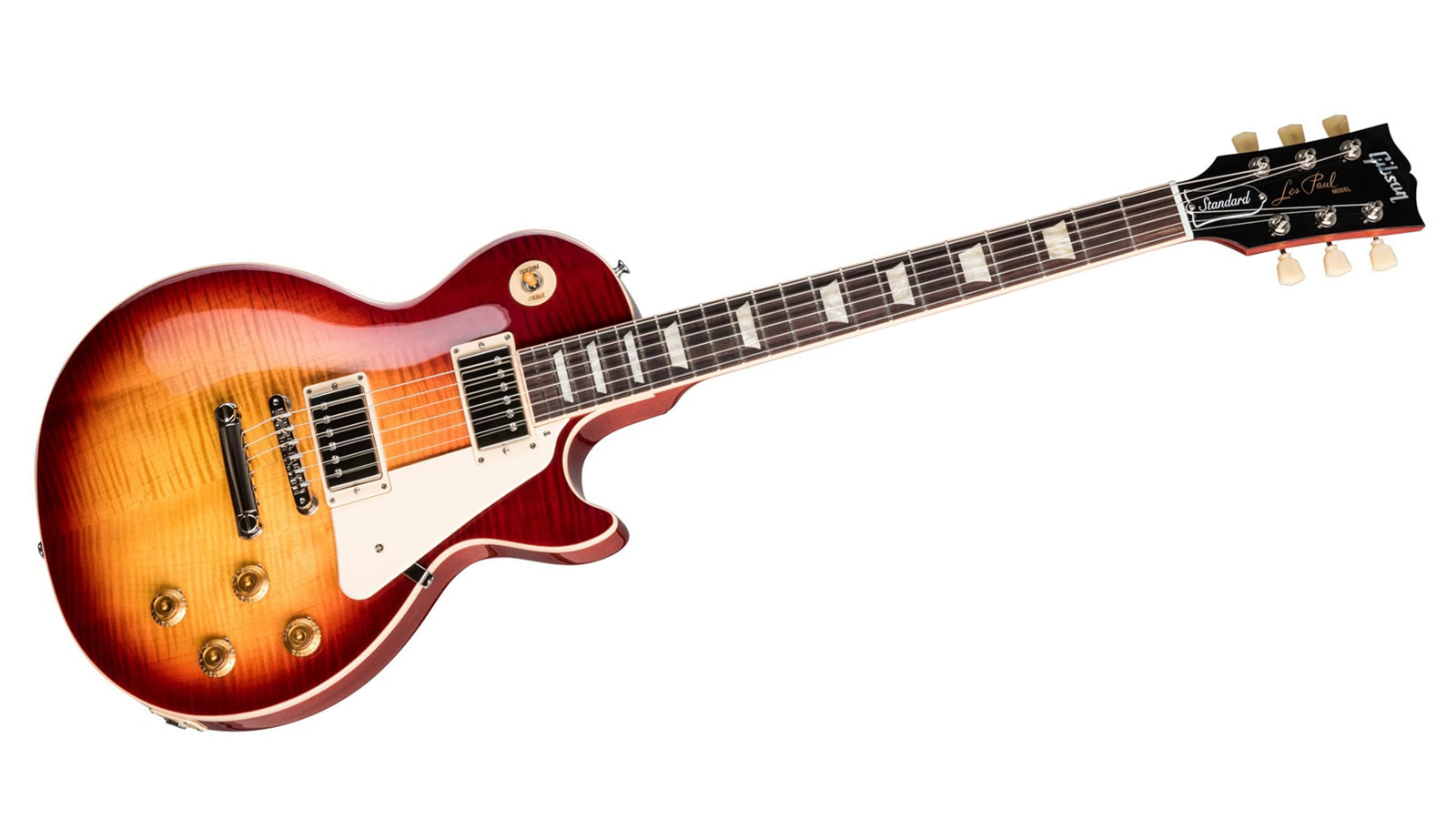
Based on the most coveted of Les Pauls from the 1950s, this Gibson is the real deal, packing the looks, playability and tones that came to define rock.
That stunning maple top will be the first thing to catch your eye, of course – particularly in this choice of Gold Top, Heritage Cherry Sunburst and Tobacco Burst - but this LP sounds as good as it looks, courtesy of a set of calibrated Burstbucker humbuckers, which deliver plenty of output for those wailing leads and hard-rocking rhythms.
The one sticking point is the price, but if you’re serious about nailing the classic-rock vibe – and you want something that looks good in your living room to boot – this is the one.
Best for bright tones
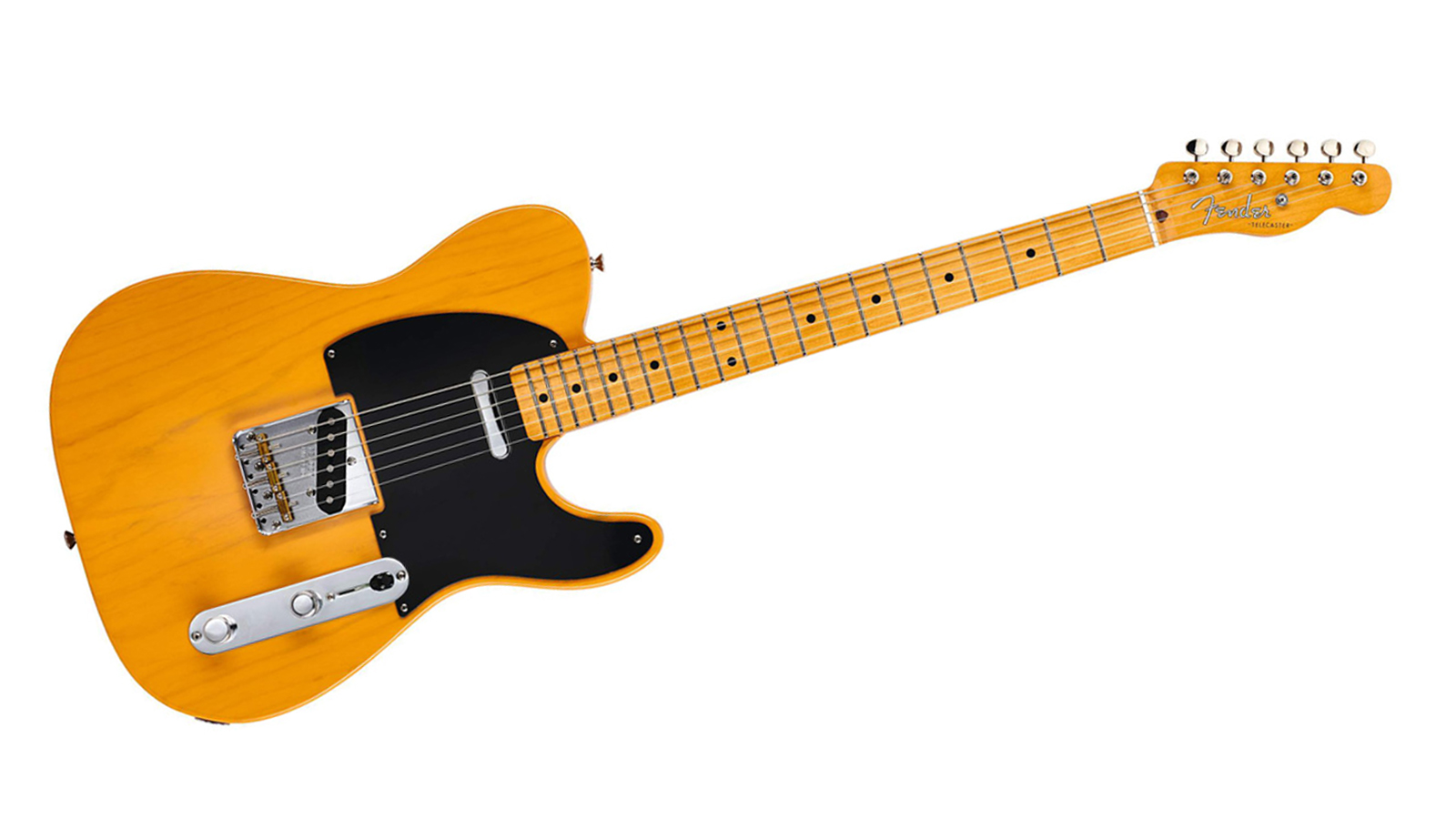
The Telecaster was the first mass-produced solidbody electric guitar – and it’s still going strong today. This is the original workhorse electric guitar, with two single-coil pickups and a whole lot of attitude.
This Vintera model is one of Fender’s latest takes on the Telecaster, and combines the best of vintage and modern specs. While the looks are pure ’50s, the playability is more comfortable thanks to a modern neck shape, while a concealed S-1 Switch allows you to unlock more humbucker-esque and out-of-phase tones, making this just about the most versatile Telecaster on the market.
Best for lightweight
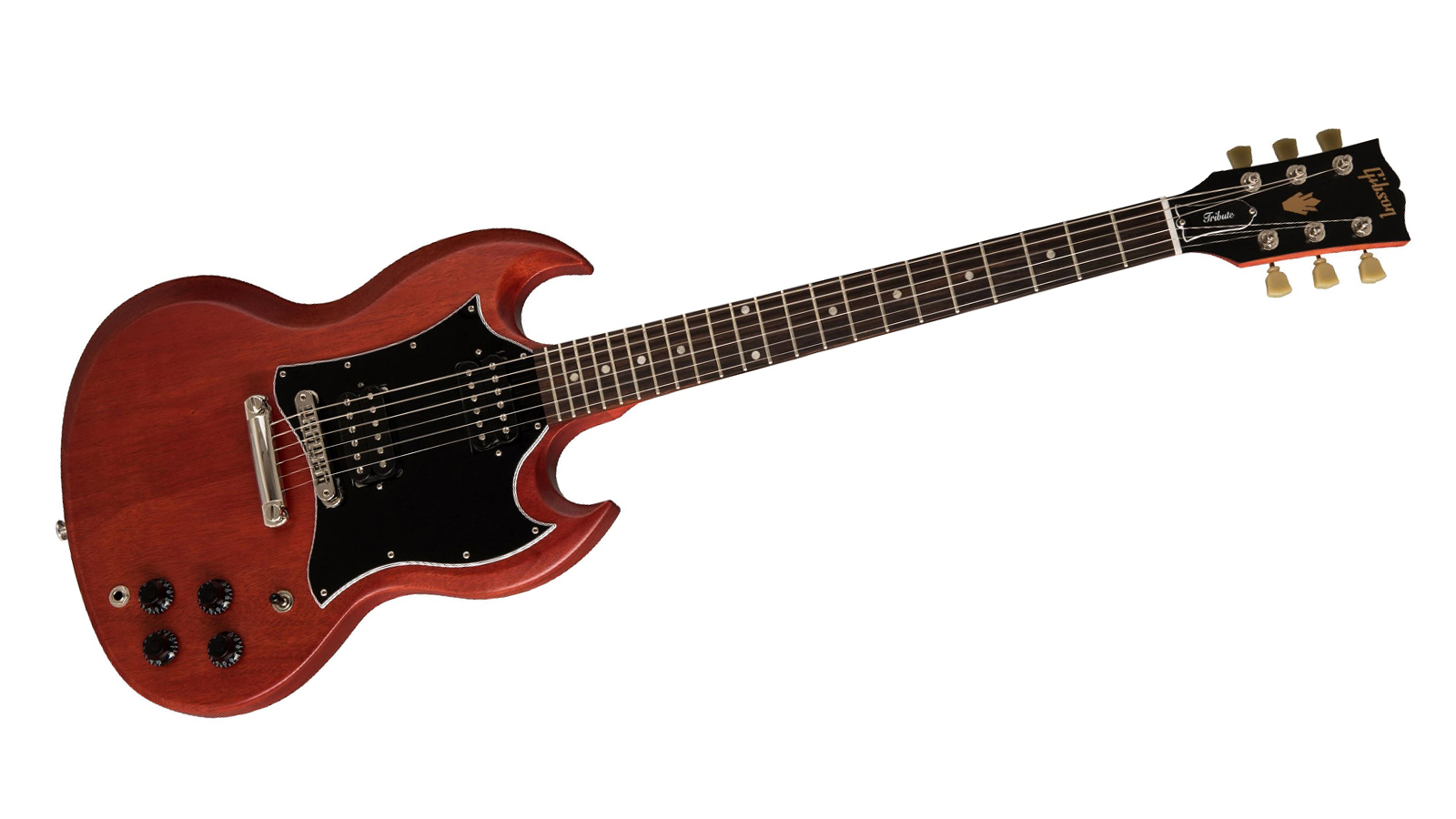
Gibson’s ‘other’ rock guitar was a sequel of sorts to the Les Paul – early runs even bore the guitarist and innovator’s name – but soon fostered an altogether heavier audience, finding itself in the hands of Tony Iommi, Angus Young and Frank Zappa.
The SG’s big plus points are the easy upper-fret access, relatively light weight and a slender, easy-to-play neck, which is set into the body for increased sustain.
This particular incarnation not only offers great value for money, but great tones, too, with a pair of riff-friendly Alnico II magnet-loaded humbucker pickups. The model’s stripped-back vibe perfectly matches its no-nonsense sonic aesthetic.
Best for something different
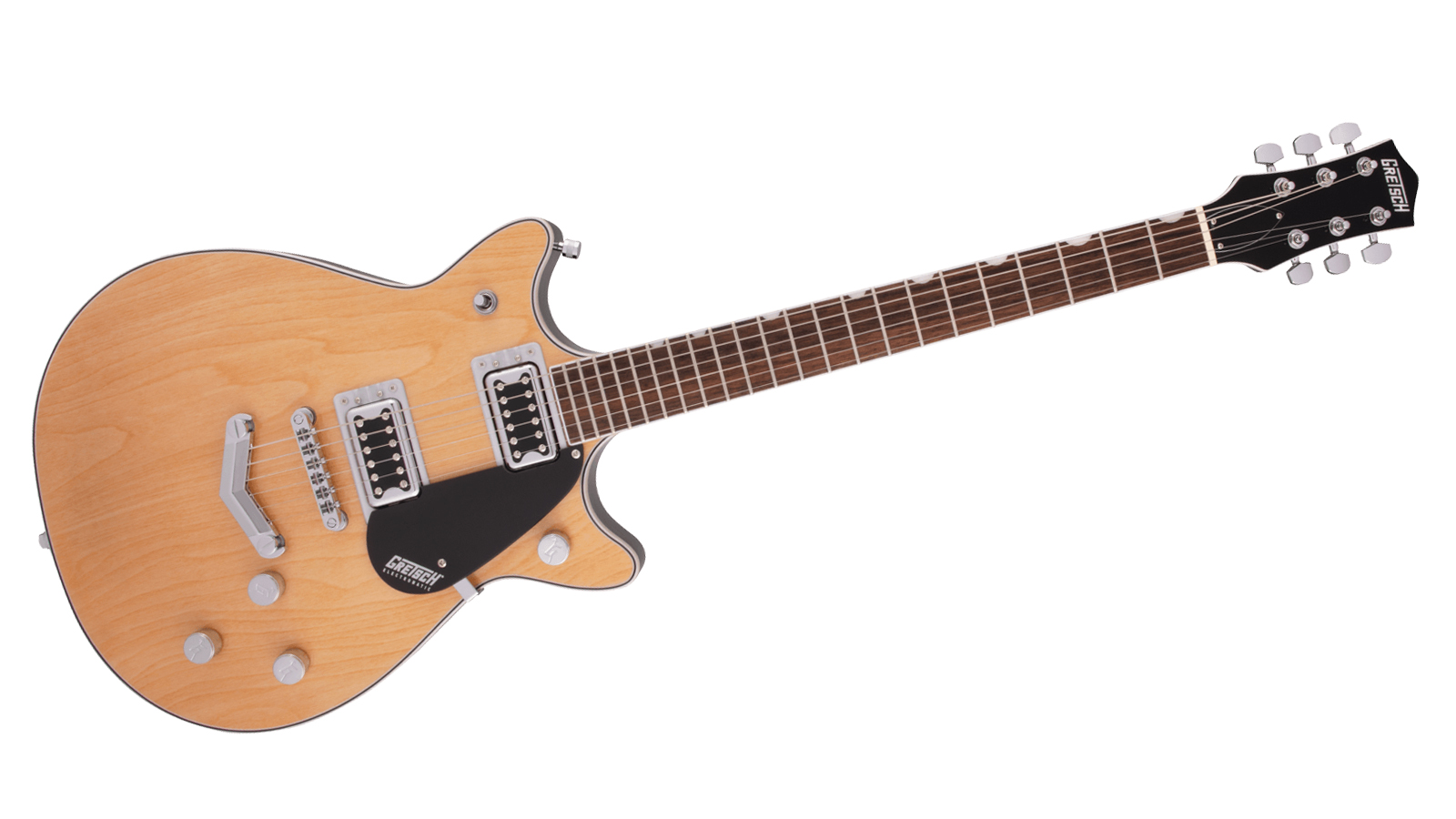
When we think of the Gretsch Jet, we instantly think of the classic tones produced by Malcolm Young. Although this isn't exactly the same model used by the famed rhythm guitarist, it will get you pretty close to that sound and at a fraction of the price.
Gretsch is known for its bright and highly articulate sound, and the Gretsch G5222 is no different. The Black Top Broad'Tron pickups certainly impress with how accurately they reproduce the classic Gretsch tones.
So if you’re looking for a guitar that is easy to play, gorgeous to look at, and can reproduce the sounds of classic AC/DC songs, then definitely check this one out.
Best for 60s tones
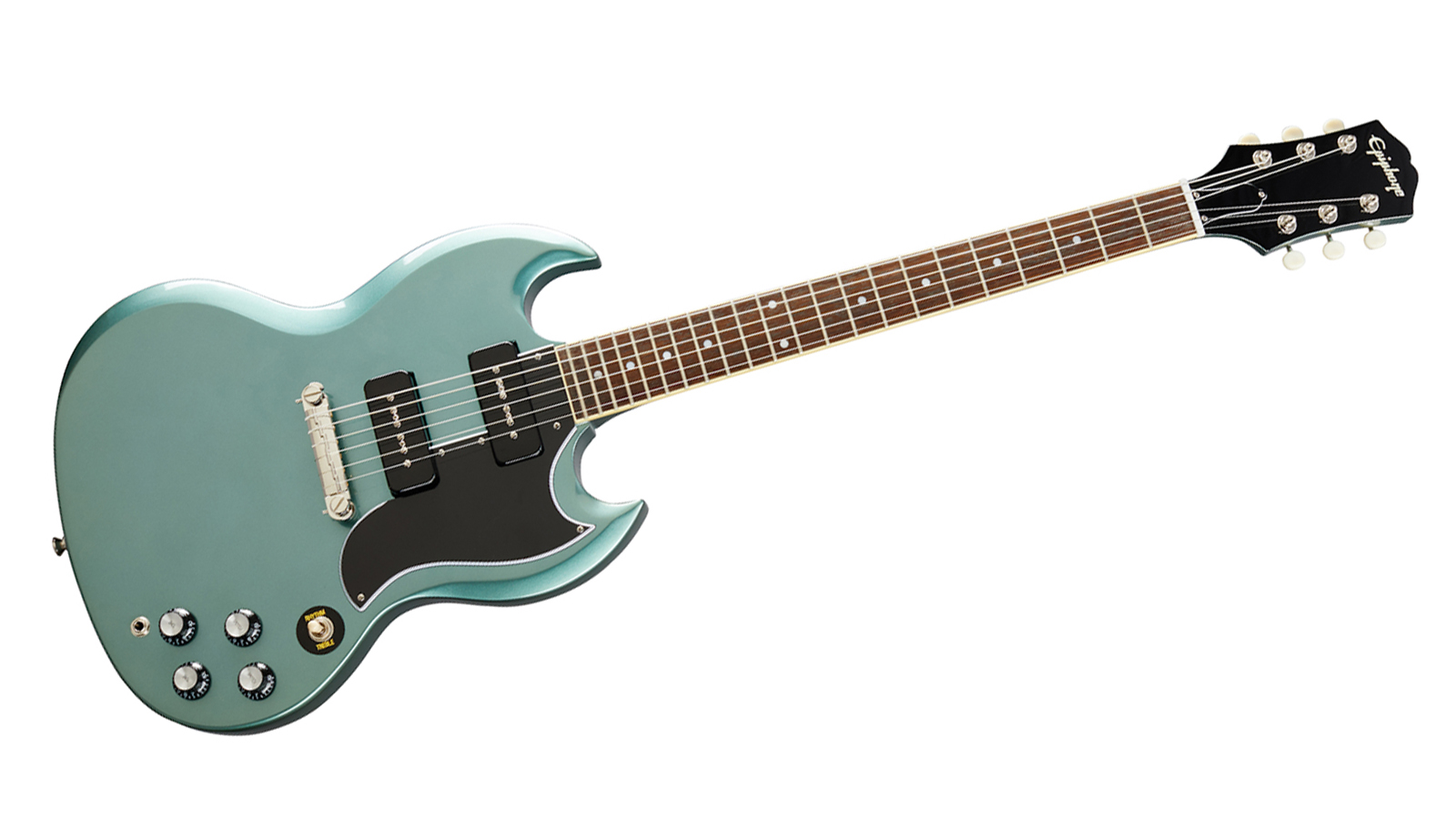
You can't have a list of the best rock guitars and not include a P-90 loaded axe! The P90 is a single-coil pickup originally produced by Gibson as far back as 1946. Unlike its Fender counterpart, the P90 has a more aggressive, fatter tone perfect for rock, so it's no wonder it's a favourite of Billie Joe Armstrong, Carlos Santana and Tony Iommi.
The Epiphone SG Special not only delivers on sound but also on playability. The 60s slim taper neck is a dream to play, and the rolled edges add an extra level of comfort. Top it off with the return of the Kalamazoo headstock, and you have one excellent looking, great sounding rock guitar.
Best for heavy shred
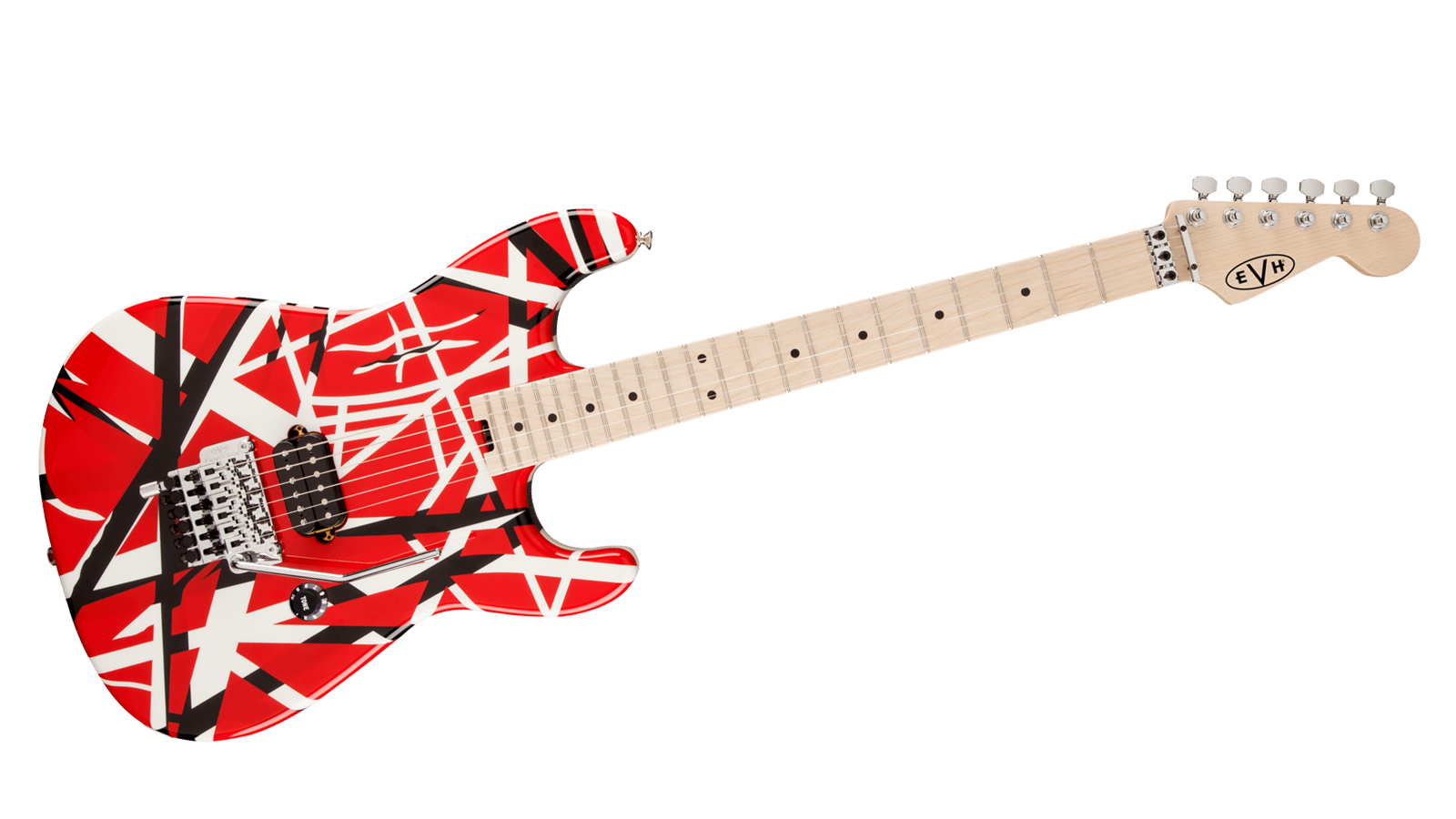
No prizes for guessing the inspiration behind this bestriped wonder, but if your tastes lie in a certain era of hard-rock excess, this is your guy. Harking back to the era where the likes of Eddie Van Halen modded their solidbodies into ‘SuperStrats’, this Striped Series model has one setting: Rock, with a capital 'R'.
Here, you get a single EVH Wolfgang bridge humbucker, designed to be run into an overdriven amp for the tight rhythms and dizzying lead pyrotechnics with which its namesake made his name.
Other features include a hand-rubbed oil finish on the speed-orientated fretboard and a Floyd Rose locking tremolo system, built for divebombs without going out of tune. It also boasts a D-Tuna to quickly drop the low E string down to D – perfect for getting your Unchained on. RIP Eddie.
Best rock guitars: Buying advice
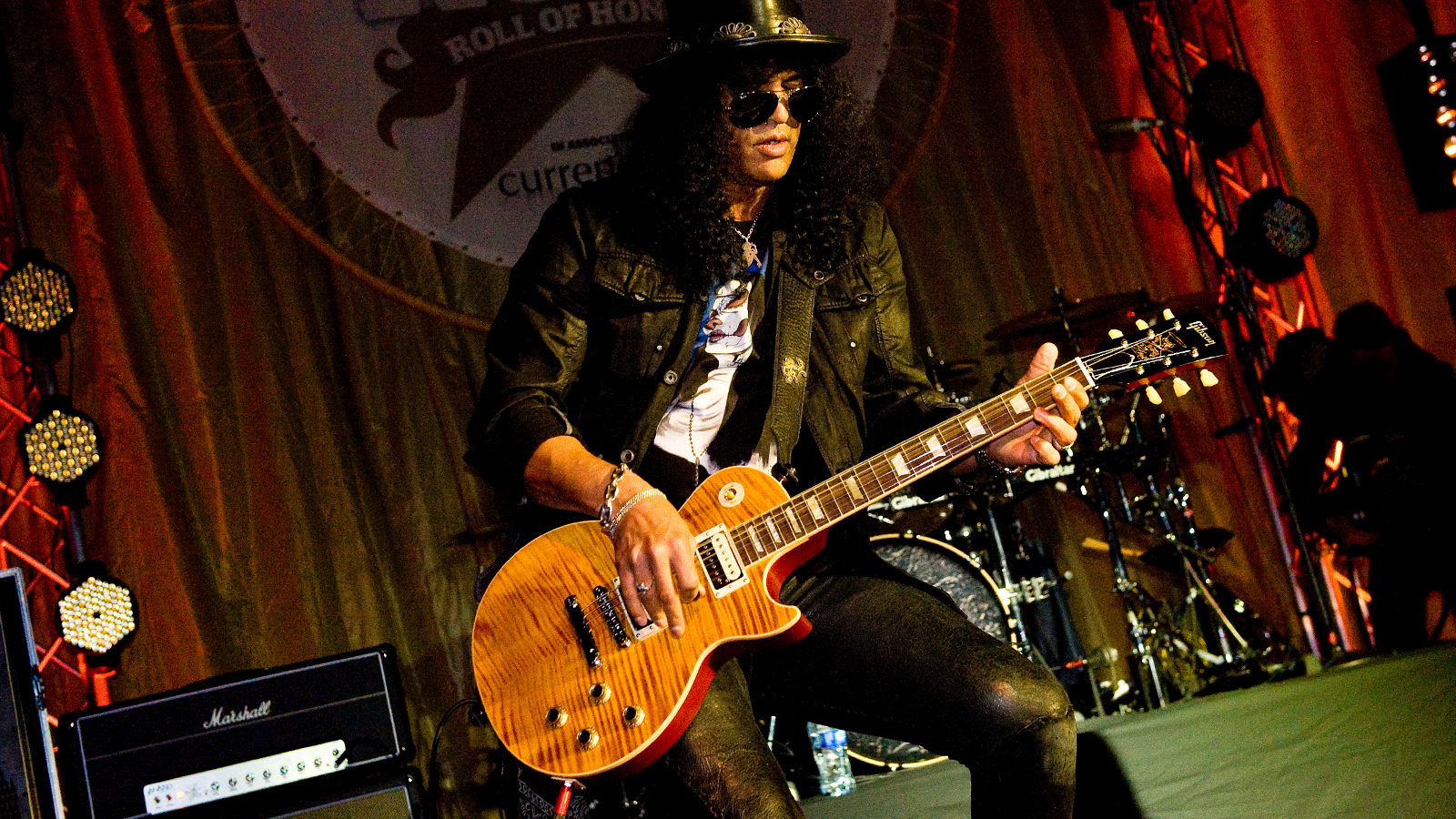
Body type
When it comes to electric guitars, there are a few primary shapes - Les Paul, SG, Stratocaster, Telecaster, ES-335 – each style offers its own sound and characteristics, so choosing the right one is extremely important.
Let's start with the differences between a solidbody and a hollowbody guitar. Pre-1950, all you'd be able to buy was hollowbody guitars – these are the bigger-bodied models with f-holes, like many jazz and blues players still employ today. These instruments produce a clear, woody tone perfect for cleaner styles of music. Be warned they can suffer from feedback issues at higher volumes or played with a heavier guitar tone.
Solidbody guitars – like the Les Paul or Tele – are made from a solid piece of wood. This gives the guitar a more aggressive and focused sound, perfect for playing at higher volumes.
Perhaps you find yourself looking for the best of both worlds. Well, in that case, you need a Semi-hollow guitar – such as the classic Gibson ES-335. These guitars are produced just like a hollow guitar but have a solid centre block to help increase sustain and reduce feedback.
Pickups
The next factor to consider is the pickups. Like the body type, which pickup you choose drastically changes the tone of your guitar.
So what do the pickups do? Well, very basically, the pickup is what turns the vibrations from the string into an electrical signal that then goes to the amplifier. The two main types of pickup found on rock guitars are single coils and humbuckers.
Single coils tend to be found on Fender style guitars – they produce a relatively low output that's dynamic with a bright top-end and great clarity. An unfortunate side effect is they do tend to pick up mains hum, and this only gets worse with increased gain and volume. The humbucker resolves this issue – it literally bucks hum!
Humbuckers are usually found in Gibson style electric guitars, producing a higher output than single coils, with more low-end and a fatter overall tone, which makes them so beloved for rock music.
In addition, the P90 is a single coil pickup that has the grunt and output of a humbucker, and is an excellent choice if you want the best of both worlds.
Since the late, great Eddie Van Halen crammed a humbucker into his Stratocaster-style body in the late-'70s, you'll find humbuckers in a variety of modern Strat-style guitars, too – they're commonly known as SuperStrats, and they're ready to rock.
So, suppose you're a fan of a particular body shape but seeking a different sound. In that case, it pays to keep an eye out for that model with a different pickup configuration or the ability to coil-split – where a humbucker is split to produce a single-coil sound.
So there you have it, that's our guide to the best rock guitars. We feel like you really can't go wrong with any guitar on this list. So whatever guitar you choose, just tune-up, plug-in and rock on - we salute you!
How we selected the best rock guitars

Here at Louder, we are music lovers and experts in our field, with many years of music listening and product testing between us. We live and breathe everything music related, and we draw on this knowledge and experience of using products when selecting the recommendations for our guides.
When choosing what we believe to be the best rock guitars available right now, we combine our hands-on experience, user reviews and testimonies and engage in discussions with our editorial colleagues to reach a consensus about the top products in any given category.
First and foremost, we are music fans, and we want others to find the right product for them. So we take into careful consideration everything from budget to feature set and ease of use to come up with a list of what we can safely say are the best rock guitars on the market right now.